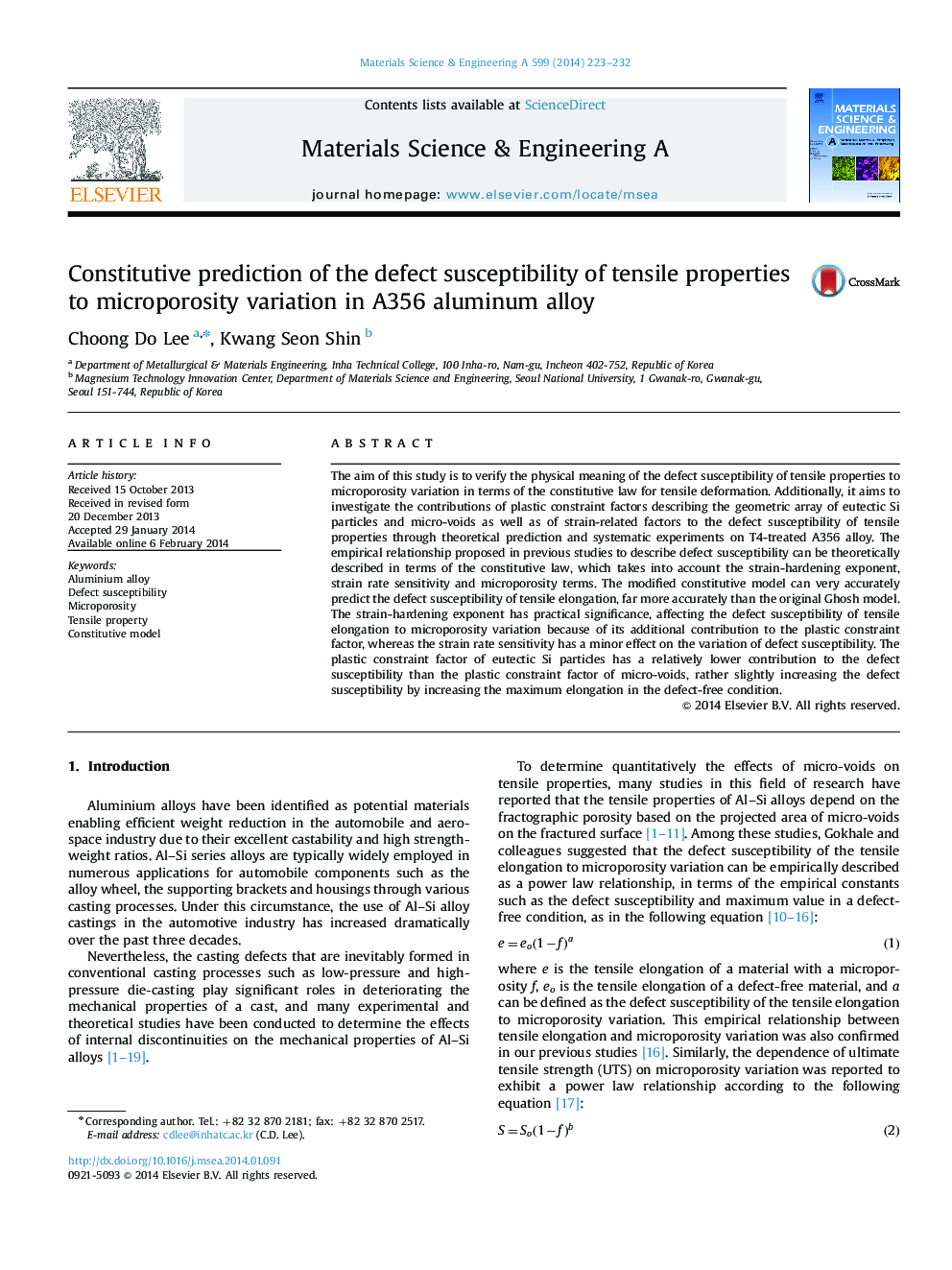| Article ID | Journal | Published Year | Pages | File Type |
|---|---|---|---|---|
| 1575415 | Materials Science and Engineering: A | 2014 | 10 Pages |
Abstract
The aim of this study is to verify the physical meaning of the defect susceptibility of tensile properties to microporosity variation in terms of the constitutive law for tensile deformation. Additionally, it aims to investigate the contributions of plastic constraint factors describing the geometric array of eutectic Si particles and micro-voids as well as of strain-related factors to the defect susceptibility of tensile properties through theoretical prediction and systematic experiments on T4-treated A356 alloy. The empirical relationship proposed in previous studies to describe defect susceptibility can be theoretically described in terms of the constitutive law, which takes into account the strain-hardening exponent, strain rate sensitivity and microporosity terms. The modified constitutive model can very accurately predict the defect susceptibility of tensile elongation, far more accurately than the original Ghosh model. The strain-hardening exponent has practical significance, affecting the defect susceptibility of tensile elongation to microporosity variation because of its additional contribution to the plastic constraint factor, whereas the strain rate sensitivity has a minor effect on the variation of defect susceptibility. The plastic constraint factor of eutectic Si particles has a relatively lower contribution to the defect susceptibility than the plastic constraint factor of micro-voids, rather slightly increasing the defect susceptibility by increasing the maximum elongation in the defect-free condition.
Related Topics
Physical Sciences and Engineering
Materials Science
Materials Science (General)
Authors
Choong Do Lee, Kwang Seon Shin,
